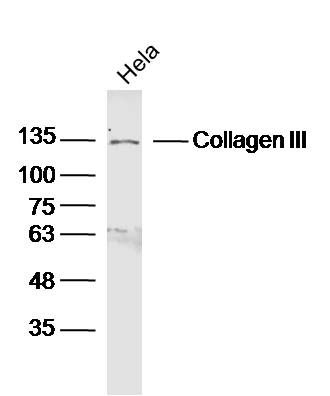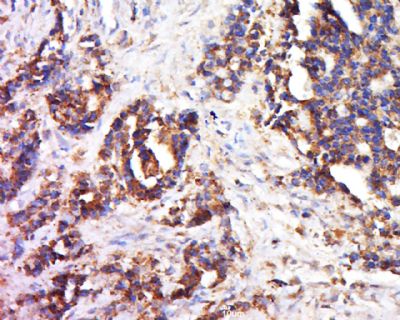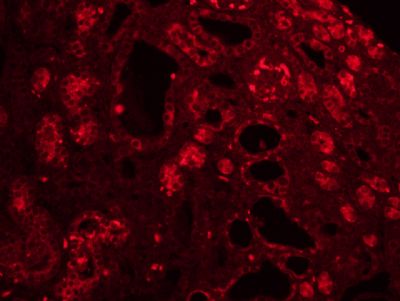[IF=3.082] Fei Yin. et al. Effect of Human Umbilical Cord Mesenchymal Stem Cells Transfected with HGF on TGF-β1/Smad Signaling Pathway in Carbon Tetrachloride-Induced Liver Fibrosis Rats. Stem Cells Dev. 2020 Oct;29(21):1395-1406 IHC ; Rat.
[IF=5.187] Mingzhu Jiang. et al. Blocking AURKA with MK-5108 attenuates renal fibrosis in chronic kidney disease. Bba-Mol Basis Dis. 2021 Nov;1867:166227 WB ; Rat.
[IF=6.543] Liu Lulu. et al. Hydrogen Sulfide Attenuates Angiotensin II-Induced Cardiac Fibroblast Proliferation and Transverse Aortic Constriction-Induced Myocardial Fibrosis through Oxidative Stress Inhibition via Sirtuin 3. Oxid Med Cell Longev. 2021;2021:9925771 WB ; rat.
[IF=4.427] Wu M et al. Synergistic effects of sulfur dioxide and polycyclic aromatic hydrocarbons on pulmonary pro-fibrosis via mir-30c-1-3p/transforming growth factor β type II receptor axis.(2018) Chemosphere 219 WB ; Mouse&Human.
[IF=1.922] Chi et al. Transdermal estrogen gel and oral aspirin combination therapy improves fertility prognosis via the promotion of endometrial receptivity in moderate to severe intrauterine adhesion. (2018) Mol.Med.Rep. 17:6337-6344 IHC ; Human.
[IF=1.26] Zhang et al. Effect of Shenkang granules on the progression of chronic renal failure in 5/6 nephrectomized rats. (2015) Exp.Ther.Me. 9:2034-2042 WB ; Rat.
[IF=1.89] Hu, Jianguo, Biao Zeng, and Xingwei Jiang. "The expression of marker for endometrial stem cell and fibrosis was increased in intrauterine adhesious."International journal of clinical and experimental pathology 8.2 (2015): 1525. IHSLCP ; Mouse.


